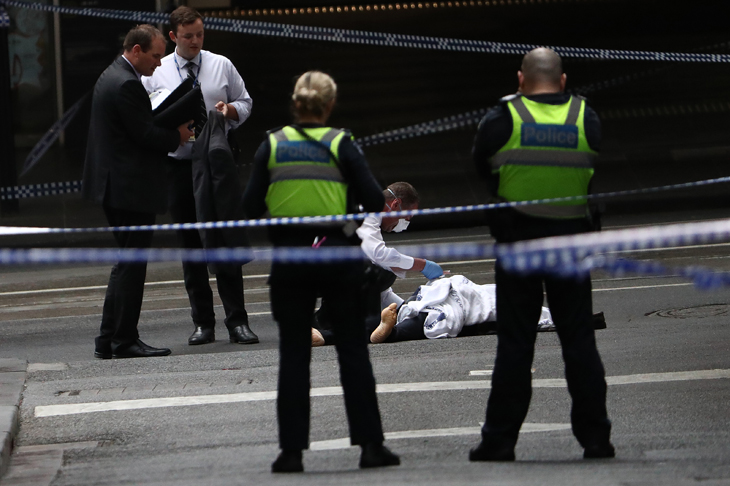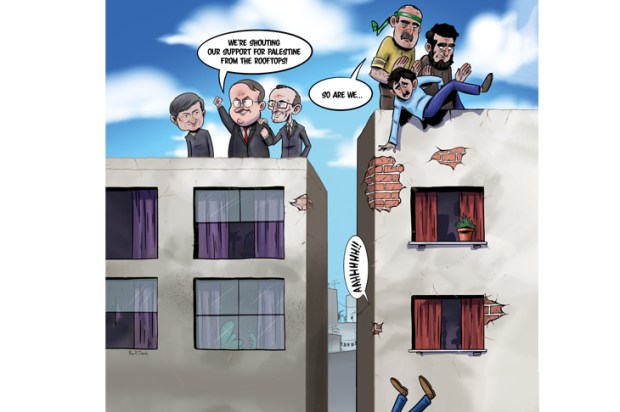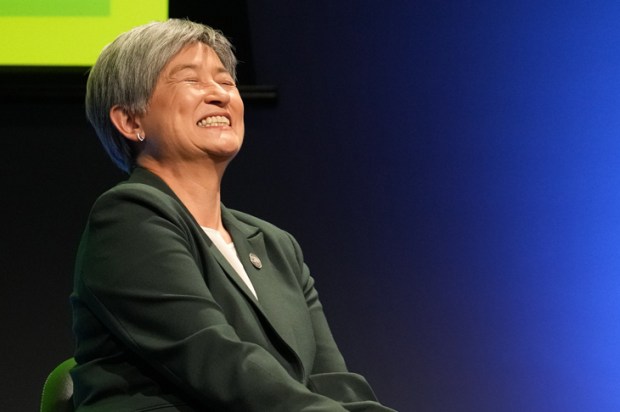There is a famous fable that if you threw a frog into a pot of hot water it would immediately perceive the hostile environment and jump out. However, if you place a second frog in a pot of cool water and gradually heat it, the frog will stay there until it dies.
Australia’s approach to the growth of radical Islam and the concomitant risks of Islamic terrorism has over recent years resembled the behaviour of the second frog. The terror event on November 9 in Bourke St by Hassan Khalif Shire Ali, a Muslim from Somalia, with an attempted car bomb and stabbing attack, is regarded as a wake-up call. On November 14, three Muslim men, Abdullah Chaarani, Ahmed Mohamed and Hamza Abbas, were convicted of planning major terrorism in Melbourne for Christmas 2016. The intervention before the planned terrorism occurred only because a junior Asio officer fortuitously observed the group purchasing explosive precursors at a chemist shop. On November 20, three Muslims of Turkish background were arrested for an alleged terror plot to kill ‘as many as possible’.
Perhaps these developments will cause the government to respond to the rising temperature of the water in which our symbolic frog currently rests. To his credit, Scott Morrison did clearly call out ‘radical, violent, extremist Islam’ as the greatest security threat in Australia while also making clear there are many, indeed mostly, good peaceful Muslims.
Life has changed in Australia as a consequence of this threat. I can recall when taking a domestic flight felt not much different to catching a bus. In our cities, in particular Sydney and Melbourne, there are concrete blocks and structures, now widely known as diversity bollards, where there were none just a few years ago, to inhibit the potential use of motor vehicles as terror weapons. Our uniformed service personnel have been instructed they can no longer wear uniforms to and from their workplaces because of the increased risk of being targets of Islamic terror. Even schools which have cadet programmes have issued similar instructions to students. Australia is changing and our freedoms are being crimped while political correctness prevents proper debate and government action. This is ‘frog-like’ behaviour.
One of the most disturbing developments was the response by Muslim leaders to the Prime Minister’s call following the Bourke St terrorism, for them to do more to deal with radicalisation in their communities. The responses can be summarised in one word – denial.
Prominent Muslim MP Dr Anne Aly harshly criticised the PM, calling it politically desperate and for political gain and that he should ‘learn terrorism 101’. Dr Ranit Jneid, President of the Australian Federation of Islamic Councils, also known as Muslims Australia, issued an extraordinary statement about ‘tragic events in Melbourne’ without even referring to terrorism. He went on to demand that both the PM and Minister for Home Affairs Peter Dutton who called for Muslim communities to be more forthcoming with information, should both retract their comments and apologise to the Muslim community. The Australian National Imams Council similarly issued a statement referring to the ‘recent crime’ and ‘a national tragedy’ without mentioning terrorism before calling on the PM to be ‘more responsible in his rhetoric’.
Regrettably none proffered an explanation why terrorists who have often connected with radical Islamic terrorists overseas and/or hate preachers and declare they are doing the Will of Allah, should not be considered to be acting out the tenets of radical Islam.
So, here’s a question for the Muslim leaders who try to argue their case from the perspective of denial, the so-called ‘nothing to do with Islam’ line. The proportion of the Australian population who identify as Muslims is approximately 2.5 per cent. How is it that of the convicted terrorists in Goulburn Supermax prison where the dangerous terrorists are housed, 90+ per cent are Muslims? What is the common thread? A further disturbing development emerged with Shire Ali’s wife, also a radicalised Muslim, refusing to cooperate with our security agencies who need to trace and understand the nature of any contacts. Shire Ali and his wife attended the Hume Islamic Youth Centre led by Sheik Mohammed Omran. Omran who responded ‘bloody PM’ to the call for Islamic leaders to step up, has had a procession of jihadists and would be terrorists emerge from his Centre, including domestic terror plotters and suicide bombers who killed themselves overseas.
The issue of local radicalisation and the role of mosques, Islamic centres and their resident and visiting preachers, demands much more comprehensive and detailed study. In addition to the Hume centre, in Australia we have had several Islamic centres which have been identified as nests of radical Islam subsequently closed after public exposure, including the Al-Furqan Islamic Centre in Melbourne and the Al-Risalah Islamic Centre in Sydney. Yet we have no real understanding of the breadth and depth of this problem.
In Europe, some mosques and Islamic centres have been found with substantial weapons stores. Weapon stores have not been found in Australian mosques although the young jihadist Farhad Jabar was allegedly given the gun for the murder of NSW police accountant Curtis Cheng at a Parramatta mosque.
There has been no published comprehensive risk assessment of mosques and Islamic centres in Australia. We can, however, learn something from US data. Research published in Middle East Quarterly titled ‘Sharia and Violence in American Mosques’ reported a random covert survey of 100 mosques. The results published in 2011 received little mainstream media attention yet were shocking: Only 19 per cent had no violent texts, 30 per cent had texts rated as moderately advocating violence, whilst a staggering 51 per cent had texts rated as severely advocating violence. It is a worry that 58 per cent of mosques had invited guest imams known to support violent jihad. The study also showed a trend for greater attendance at mosques which had more violent content. While we might struggle to stop online radicalisation, we need a proper audit and risk assessment of the content and activities of mosques and Islamic centres in Australia. Ongoing surveillance is required. Firm action must be taken against any facility and community leader involved in promoting violence.
We should of course commend PM Morrison for calling out the threat of radical Islam. However, he needs to follow up with a clear statement of strategies to deal with the problem he has now identified.
Got something to add? Join the discussion and comment below.
Get 10 issues for just $10
Subscribe to The Spectator Australia today for the next 10 magazine issues, plus full online access, for just $10.
You might disagree with half of it, but you’ll enjoy reading all of it. Try your first month for free, then just $2 a week for the remainder of your first year.














Comments
Don't miss out
Join the conversation with other Spectator Australia readers. Subscribe to leave a comment.
SUBSCRIBEAlready a subscriber? Log in